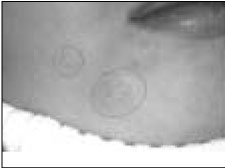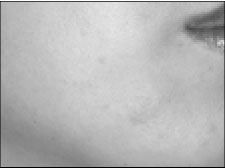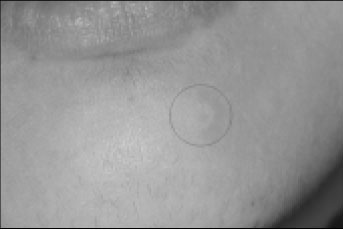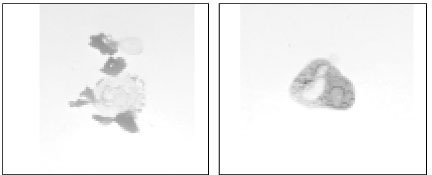J Korean Acad Conserv Dent.
2009 Jan;34(1):38-41. 10.5395/JKACD.2009.34.1.038.
Iatrogenic chemical burn on facial skin by 37% phosphoric acid etchant
- Affiliations
-
- 1Department of Conservative Dentistry, Graduated school, Kangnung National University, Korea. drbozon@kangnung.ac.kr
- 2Department of Conservative Dentistry, College of Medicine, A-jou University, Korea.
- KMID: 2176041
- DOI: http://doi.org/10.5395/JKACD.2009.34.1.038
Abstract
- When we use the total-etch dentin adhesive system for composite resin restorations, gel or liquid acid etchant such as 37% phosphoric acid is commonly used. Thirty seven percentage phosphoric acid is very powerful erosive agent, and can cause severe harmful effects when it contacts with an oral mucosa and facial skin. This case describes iatrogenic chemical burn on facial skin caused by phosphoric acid which was happened during composite resin restorative procedure. Chemical burn by acid etchant can be evoked by careless handling of remnant and syringe. In order to prevent these iatrogenic injuries, we should check the complete removal of the etching agent both in intra and extra-oral environments after etching and rinsing procedure and it is necessary to use of the rubber dam or isolation instruments. If accidental burn were occurred, immediate wash with copious water. And bring the patient to the dermatologist as soon as possible.
Keyword
MeSH Terms
Figure
Reference
-
1. Gutteridge DL. Iatrogenic oral ulceration following restorative treatment with an acid-etch material. Br Dent J. 1984. 156:403–404.
Article2. Lewis GK. Chemical burns. Am J Surg. 1959. 98:928.
Article3. Cabnadian Center for Occupational health and safety. Material Safety Data Sheat. 1991.4. Gruber RP, Laub DR, Vistinness LM. The effect of hydrotherapy on the clinical course and pH of experimental cutaneous chemical burns. Plast Reconstr Surg. 1975. 55:200.
Article
- Full Text Links
- Actions
-
Cited
- CITED
-
- Close
- Share
- Similar articles
-
- Treatment of Burns Exposed to Glacial Acetic Acid Dough
- Two Cases of Chemical Burns by Hydrofluoric Acid
- A Clinical Study on Recent Causing Agents of Chemical Burns
- A Clinical Observation of Chemical Burn
- Effects of phosphoric acid concentration on depth of etch and shear bond strength of orthodontic brackets to bovine enamel








